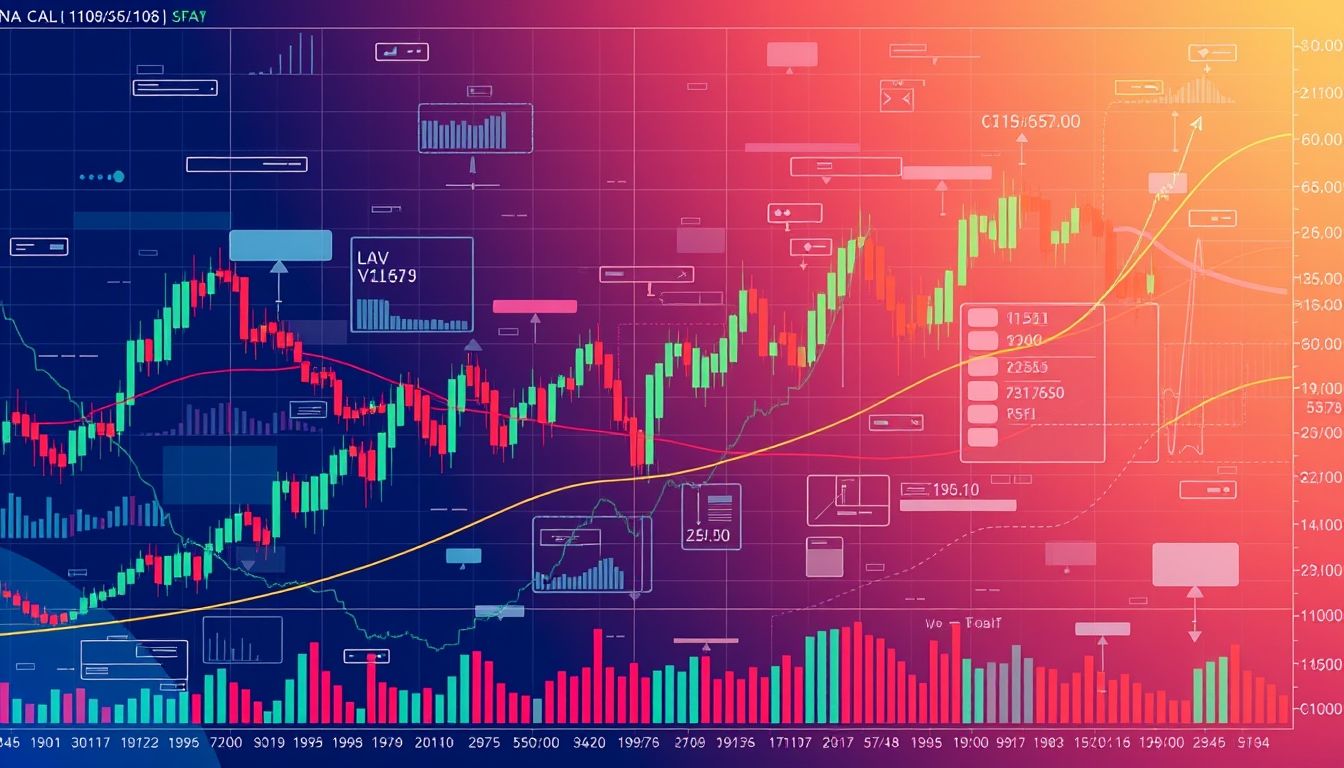Introduction to Custom Indicators in Trading
In the fast-paced world of financial trading, traders are constantly seeking ways to gain a competitive edge. One powerful tool available to them is custom indicators. These indicators are analytical tools tailored to meet the individual needs of a trader, providing unique insights into market movements that may not be apparent using standard indicators.
What are Custom Indicators? Custom indicators are essentially mathematical formulas and computer programs that are created to generate trading signals based on historical price data. Unlike standard, widely available indicators, custom indicators are designed to suit specific trading strategies and market patterns.
Why Use Custom Indicators?
- Customization: Tailor indicators to fit your unique trading style.
- Unique Insights: Discover patterns and opportunities that standard indicators might miss.
- Competitive Edge: Gain an edge in the market through customized analysis.
Chapter 1: Understanding the Basics of Custom Indicators
Before diving into advanced trading strategies, it's essential to understand the fundamentals that underpin custom indicators.
1.1 Building Custom Indicators:
The process of building custom indicators typically involves using programming languages such as MQL4/MQL5 (MetaQuotes Language) for MetaTrader platforms or Pine Script for TradingView. These languages allow traders and programmers to create their own formulas and apply them to market data.
Example: Let's say you want to create a custom indicator that identifies when a 50-day moving average is above a 200-day moving average. You can write a program that calculates these moving averages and plots a visual signal on the chart when this condition is met.
1.2 Types of Custom Indicators:
There are a wide variety of custom indicators available, designed to serve different purposes. Some common types include:
- Trend Indicators: Help identify the direction of the prevailing trend.
- Oscillators: Identify overbought and oversold conditions.
- Volume Indicators: Analyze trading volume to confirm price movements.
- Volatility Indicators: Measure market volatility.
1.3 Data Sources:
Custom indicators rely on various data sources, including:
- Historical Price Data: Open, close, high, and low prices for each period.
- Volume Data: The number of shares or contracts traded.
- Order Book Data: Information about buy and sell orders.
- External Data Sources: Economic data, news, or sentiment from external sources.
Chapter 2: Identifying Strengths and Weaknesses of Custom Indicators
Custom indicators offer numerous advantages, but it's essential to be aware of their potential limitations.
2.1 Strengths:
- Customization: Tailor indicators to fit your specific trading strategy.
- Unique Insights: Discover patterns that standard indicators might miss.
- Enhanced Analysis: Incorporate multiple data sources for comprehensive analysis.
2.2 Weaknesses:
- Over-Optimization: Avoid over-optimizing indicators for specific historical data, leading to poor real-world performance.
- Lag: Custom indicators rely on historical data, which can lead to lagging signals.
- Complexity: Creating custom indicators can be complex and require programming skills.
Chapter 3: Trading Strategies Using Custom Indicators
Now, let's explore some practical trading strategies that can be implemented using custom indicators.
3.1 Trend-Following Strategies:
Identifying prevailing trends is a cornerstone of many trading strategies. Custom indicators can enhance trend-following strategies by providing early signals and trend confirmations.
Example: Create a custom indicator that combines two moving averages and an oscillator to identify strong trends. When the shorter moving average crosses above the longer moving average and the oscillator confirms the trend, initiate a long position.
3.2 Swing Trading Strategies:
Swing trading involves holding positions for several days or weeks to profit from price swings. Custom indicators can assist swing traders in identifying potential entry and exit points.
Example: Develop a custom indicator that identifies overbought and oversold conditions based on price and volume data. When the indicator suggests that an asset is oversold, consider entering a long position.
3.3 Breakout Strategies:
Breakout strategies capitalize on significant price movements that often occur after periods of consolidation. Custom indicators can help identify potential breakouts.
Example: Create a custom indicator that monitors an asset's trading range. When the price breaks out of the range with significant volume, consider entering a position in the direction of the breakout.
3.4 Reversal Strategies:
Reversal strategies aim to profit from potential trend reversals. Custom indicators can help identify early warning signs of trend reversals.
Example: Develop a custom indicator that combines candlestick patterns and oscillators to identify potential trend reversals. When a reversal candlestick pattern appears and the oscillator confirms the signal, consider entering a position opposite to the prevailing trend.
Chapter 4: Integration with Existing Trading Strategies
Custom indicators can be seamlessly integrated into existing trading strategies to enhance their effectiveness.
4.1 Confirmation:
Use custom indicators to confirm signals generated by standard indicators or other analysis methods. For example, if a moving average indicates an uptrend, look for confirmation from a custom indicator that monitors volume.
4.2 Filtering:
Use custom indicators to filter out weak or unreliable signals. For example, you can use a custom indicator that monitors volatility to avoid trading during periods of high volatility.
4.3 Risk Management:
Custom indicators can be integrated into risk management strategies to identify optimal stop-loss and take-profit levels. For example, you can use a custom indicator that monitors market volatility to adjust position size accordingly.
Chapter 5: Popular Custom Indicators and Their Sources
While custom indicators are tailored to individual needs, there are some popular custom indicators that have gained traction among traders.
5.1 Custom Ichimoku Cloud Indicator:
This custom indicator adds extra layers of analysis to the standard Ichimoku Cloud indicator, providing more precise signals.
5.2 Custom Price Volume Indicator:
This indicator combines price and volume data to identify potential entry and exit points based on buying and selling pressure.
5.3 Custom ATR Volatility Indicator:
This indicator measures market volatility using the Average True Range (ATR) and provides insights into potential risk levels.
Sources: Custom indicators can be found on online indicator marketplaces, trading forums, and developer websites.
Chapter 6: Testing and Optimizing Custom Indicators
Before using custom indicators in live trading, it's essential to test and optimize them thoroughly.
6.1 Backtesting:
Backtesting involves applying custom indicators to historical data to evaluate their performance. Use sufficient historical data to ensure reliable results.
6.2 Forward Testing:
Forward testing involves using custom indicators in a simulated trading environment with real-time market data. This allows you to assess their performance in live market conditions without risking real capital.
6.3 Optimization:
Adjust the parameters of custom indicators to optimize their performance. Use optimization techniques like genetic optimization to find the best set of parameters.
Chapter 7: Risk Management with Custom Indicators
Risk management is crucial when using custom indicators in trading.
7.1 Setting Stop-Loss Levels:
Use custom indicators to identify optimal stop-loss levels based on market volatility and risk tolerance.
7.2 Position Sizing:
Adjust position size based on the signals provided by custom indicators. Avoid risking too much capital on a single trade.
7.3 Diversification:
Don't rely solely on custom indicators for trading decisions. Diversify your trading strategies to reduce risk.
Chapter 8: Common Mistakes to Avoid
To avoid potential pitfalls, be aware of common mistakes that traders make when using custom indicators.
8.1 Over-Optimization:
Avoid over-optimizing indicators for specific historical data, leading to poor real-world performance.
8.2 Ignoring Market Conditions:
Consider prevailing market conditions when using custom indicators. Indicators may not perform well in all market conditions.
8.3 Failure to Test:
Thoroughly test custom indicators before using them in live trading.
Chapter 9: Real-World Examples of Custom Indicator Usage
Let's look at some real-world examples of how traders use custom indicators to improve their performance.
9.1 Case Study 1:
A forex trader uses a custom indicator that combines moving averages and Fibonacci lines to identify potential entry and exit points in major currency pairs. This indicator has significantly improved their profit-loss ratio.
9.2 Case Study 2:
A stock trader uses a custom indicator that monitors trading volume to confirm breakouts. This indicator has improved the accuracy of their breakout strategies.
Chapter 10: The Future of Custom Indicators
As technology continues to evolve, the future of custom indicators is promising. Artificial intelligence and machine learning are expected to play an increasingly important role in the development of custom indicators, enabling traders to discover complex patterns and make more informed trading decisions.
Conclusion: Custom indicators are powerful tools that can significantly enhance your trading strategies. By understanding their fundamentals, identifying their strengths and weaknesses, and using them strategically, you can gain a competitive edge in the financial markets. Remember that testing, optimization, and risk management are crucial when using custom indicators. As technology continues to evolve, the future of custom indicators is bright, offering traders new opportunities to improve their performance.



